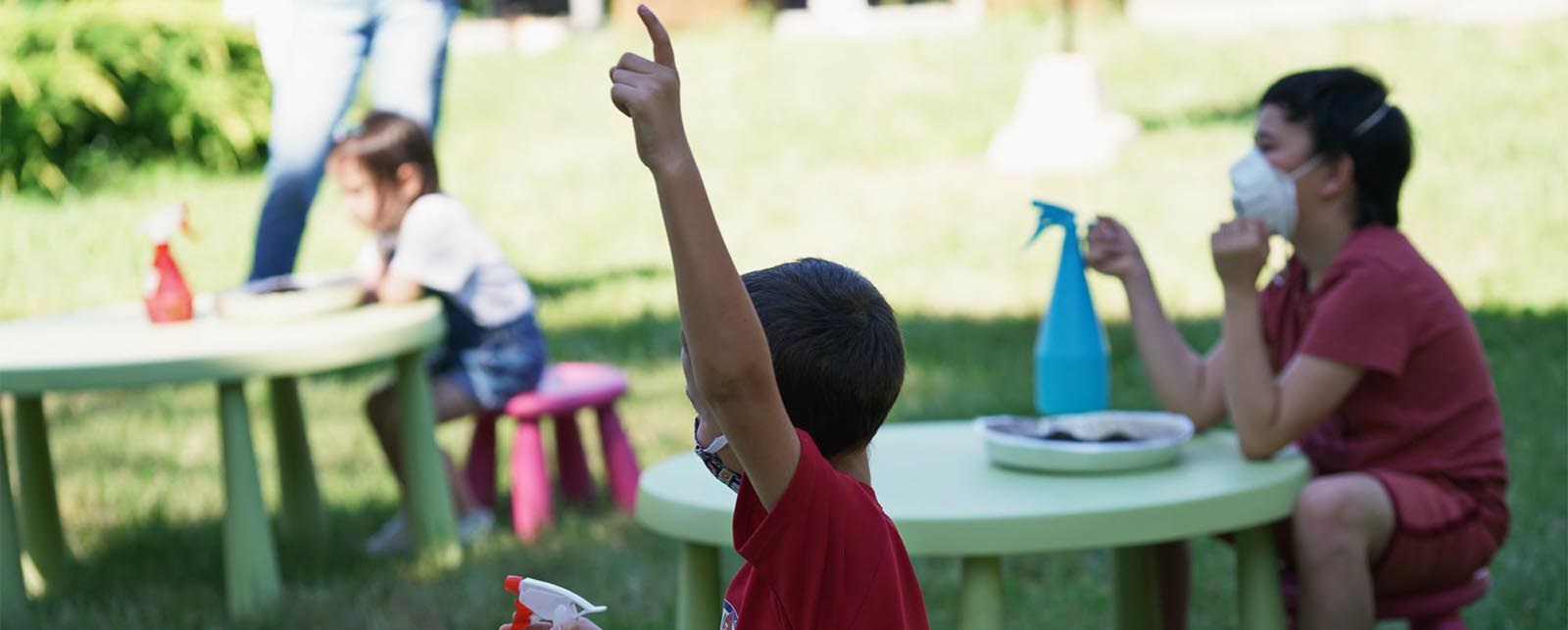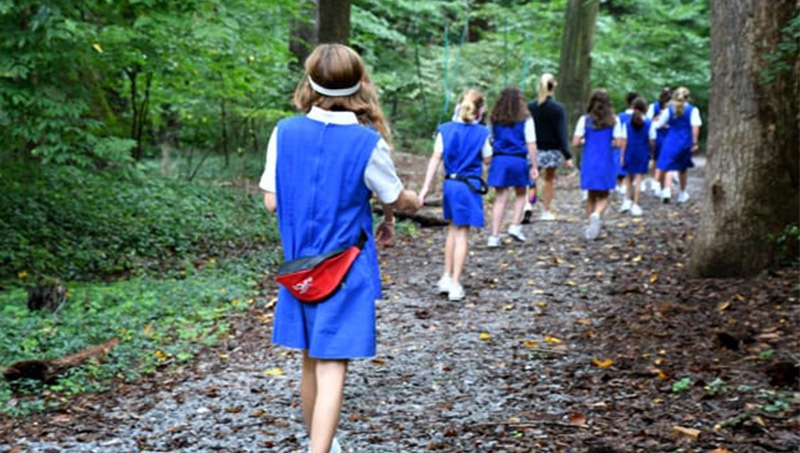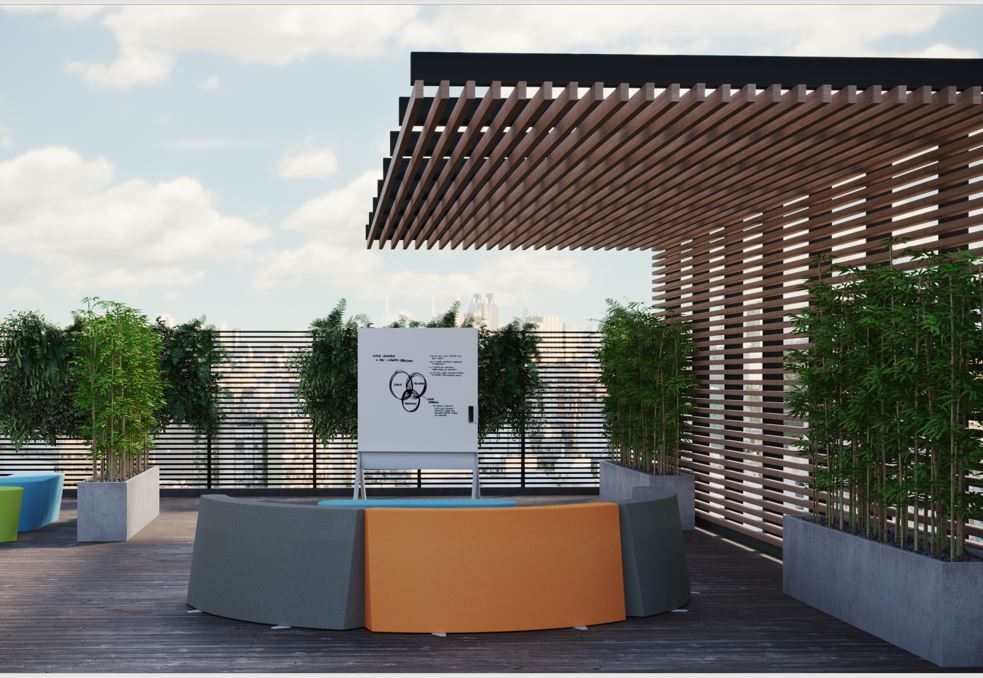
Move Outside
This year many schools across the country took their desks, chairs, easels and their students outside. The pandemic created the need and opportunity, and the movement was organized and supported by the National COVID-19 Outdoor Learning Initiative, co-founded in our backyards by Green Schoolyards America; the Lawrence Hall of Science at the University of California, Berkeley; San Mateo County Office of Education; and Ten Strands.
The outdoor learning environment solves for many challenges, from lowering the possibility of infection (virus transmission risk outside is nearly 20 times lower) to clearing the obvious obstacles that distance learning presents in exacerbating the inequities in our education system. And then there are the benefits; studies show when we bring students into nature it reduces stress, improves moods, boosts concentration, and increases engagement.
From Gwen Dewar, Ph.D.'s work we found “in a series of experiments conducted in Japan, researchers assigned volunteers to take walks in both natural and urban settings. The walks were matched for length and physical difficulty, so people got similar amounts of exercise in both conditions. But the nature walks were linked with unique benefits, like reduced feelings of anxiety, and lower levels of the stress hormone, cortisol (Park et al 2010; Song et al 2014; Song et al 2015).”

Vital and Active
The vitality of a school community increases connection and engagement. Physical wellbeing has taken center stage for obvious reasons over the past several months, and learning spaces should do their part to contribute to active, healthy physical experiences. Educational environments are encouraged to provide students and teachers opportunities to move around, play, change posture, and be active while learning and teaching. Outdoor learning contributions to physical wellbeing are linked to positive emotional and cognitive functionalities, reducing anxiety, distraction, and symptoms of ADHD.
The active learning movement and place based learning both tie directly to the variety of potential outdoor learning environments. Staffing, curriculum, programming suggestions and case studies are available through Green Schoolyards and portable, flexible furniture solutions by Smith System and Steelcase are designed to support ease of reorganizing spaces both inside and outdoors. Fun, loose-fit designs provide just enough structure to keep students focused, yet still relax into nature’s lessons.

Along with many other milestones, let's hope 2020 is remembered as the year education broke free from the four walls of school buildings to embrace the healthy, fresh air and learning opportunities outside. We're ready to work together to make that a reality.